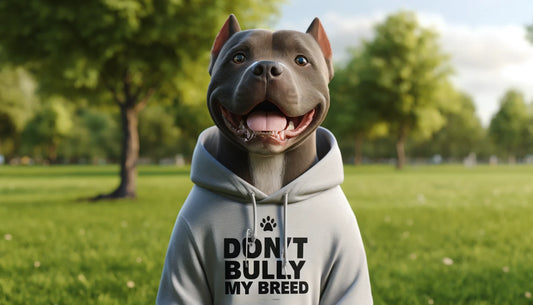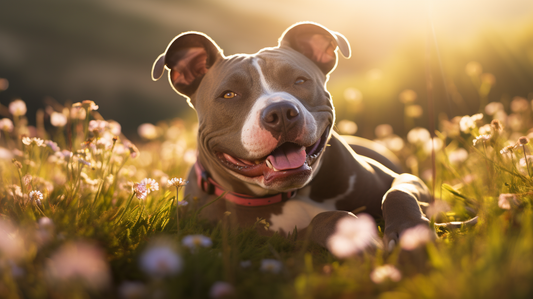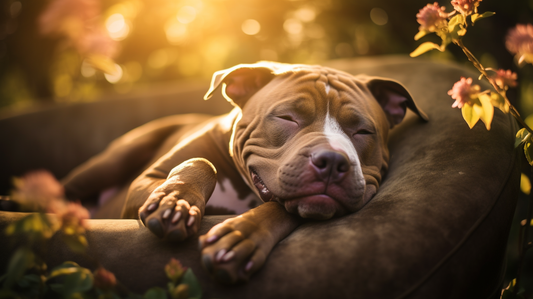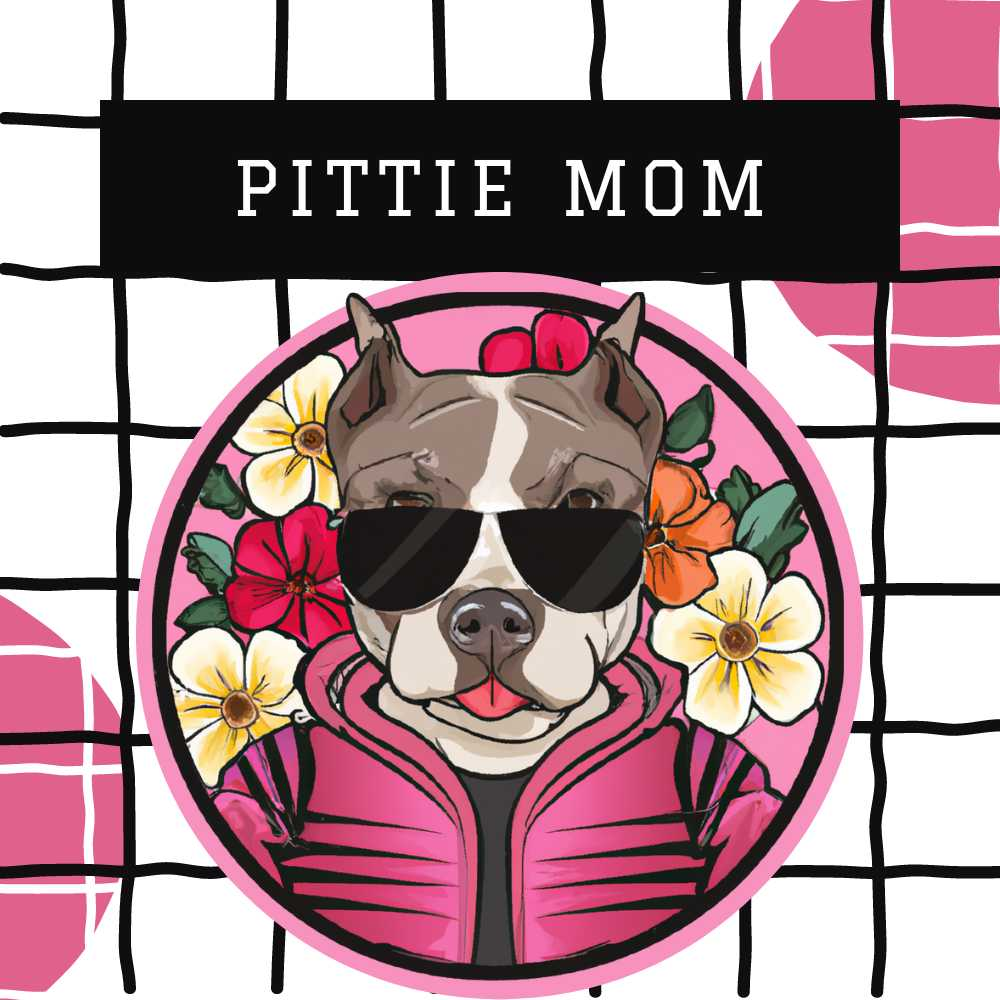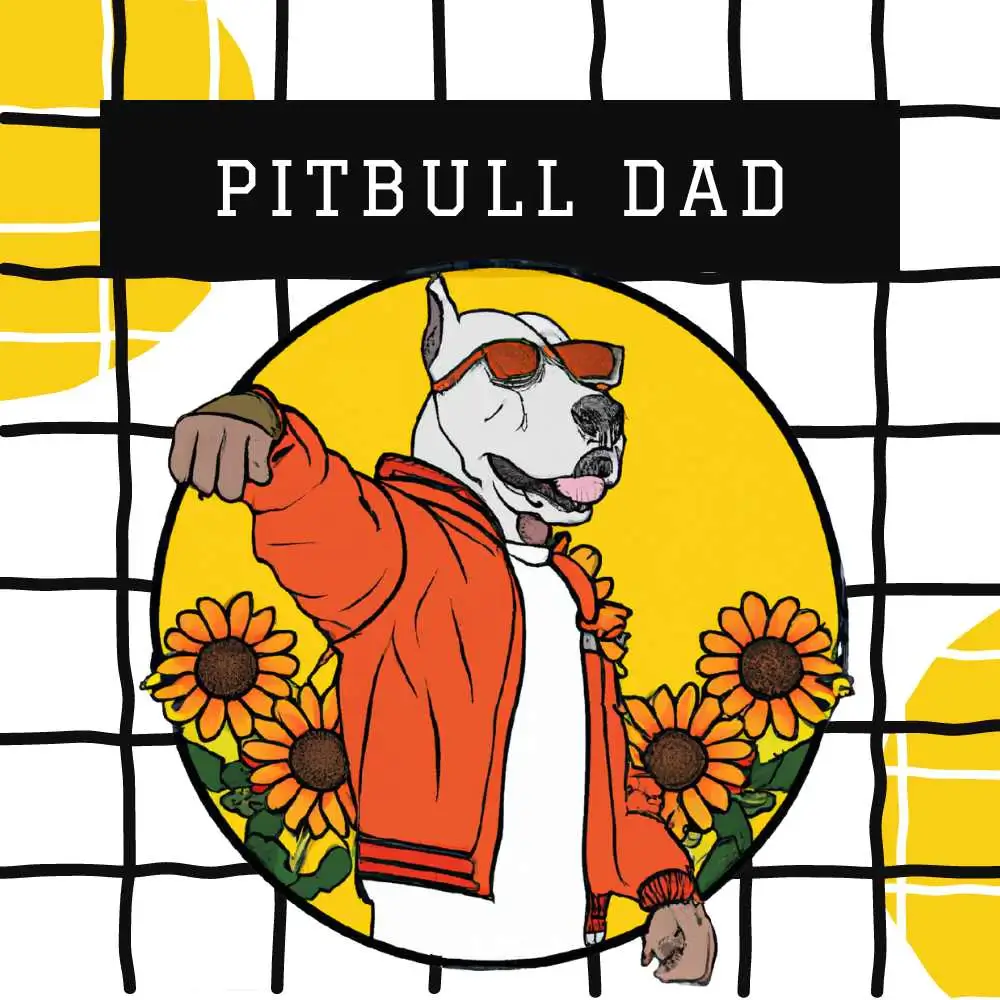Red Nose Pitbulls: A Comprehensive Guide to This Loving and Misunderstood Breed
Tom Drachman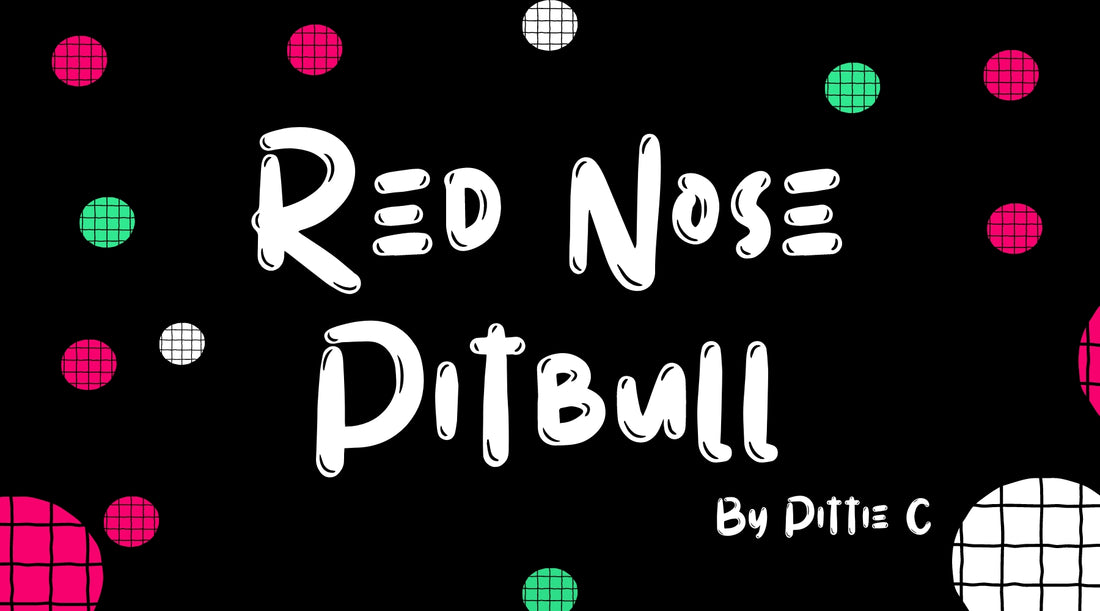
Table of Contents
- Introduction to Red Nose Pitbulls
- Temperament and Personality Traits
- Are Red Nose Pitbulls Good Family Dogs?
- The Loving Nature of Red Nose Pitbulls
- Red Nose Pitbulls and Their Interaction with Other Dogs
- Training and Exercise Needs
- Are Red Nose Pitbulls Easy to Train?
- Exercise Requirements for a Healthy and Happy Red Nose Pitbull
- Health and Lifespan of Red Nose Pitbulls
- Red Nose Pitbulls as Guard Dogs
- Debunking Myths
- Caring for a Red Nose Pitbull
- Adopting a Red Nose Pitbull
- Finding a Responsible Breeder or Rescue Organization
- Red Nose Pitbull Puppies vs. Adults: Which is Right for You?
- Conclusion
Introduction to Red Nose Pitbulls
Red Nose Pitbulls are a unique and beautiful variation of the American Pitbull Terrier breed. Known for their distinctive reddish-copper nose, they have gained popularity among dog enthusiasts and pet owners alike. Despite their sometimes misunderstood reputation, Red Nose Pitbulls are affectionate, loyal, and intelligent dogs that make excellent companions. In this article, we will explore the history, origins, and physical characteristics of this remarkable breed.
History and Origins of Red Nose Pitbulls
The Red Nose Pitbull's history can be traced back to the early 19th century in Ireland. During this time, selective breeding of Old English Bulldogs and Old English Terriers resulted in the development of the original Pitbull Terriers. The red nose variation is believed to have originated from the Old Family Red Nose (OFRN) strain of Pitbulls, which were highly sought after for their unique appearance and exceptional working abilities.
Irish immigrants brought these dogs to the United States in the mid-1800s, where they continued to be bred for their strength, agility, and tenacity. The Red Nose Pitbulls became popular as working dogs on farms, hunting companions, and even as family pets. Over time, they also gained notoriety in the cruel and illegal sport of dogfighting, which has unfortunately contributed to the negative stereotypes surrounding the breed. However, responsible breeders and owners have continued to advocate for the true nature of the Red Nose Pitbull as a loving and loyal companion.
Physical Characteristics of Red Nose Pitbulls
Red Nose Pitbulls are medium to large-sized dogs with a muscular and athletic build. They typically weigh between 30 to 85 pounds and stand 17 to 21 inches tall at the shoulder. Males are generally larger and more muscular than females. One of their most distinguishing features is, of course, their reddish-copper colored nose, which is accompanied by matching red or amber eyes and a red coat.
Their coat is short, smooth, and glossy, and it comes in various shades of red, including fawn, chestnut, and mahogany. Some Red Nose Pitbulls may also have white markings on their chest, face, or paws. Their ears are typically cropped or left natural, and their tail is thick and tapered.
The Red Nose Pitbull's sturdy and powerful appearance is a testament to its strength and athleticism. Despite their robust build, they are agile and graceful in their movements, making them excellent working dogs and companions for various activities such as hiking, running, or even canine sports like agility and weight pulling.
In conclusion, the Red Nose Pitbull is a striking and strong breed with a fascinating history and distinct appearance. Their loyal and loving nature makes them wonderful companions for those willing to invest time and effort into understanding and nurturing their unique needs.
| Criteria | Details |
|---|---|
| Breed | Red Nose Pitbull |
| Origin | Ireland |
| Size | Medium to large |
| Height | 17 to 21 inches at the shoulder |
| Weight | 30 to 85 pounds |
| Coat | Short, smooth, and glossy |
| Coat Colors | Various shades of red (fawn, chestnut, mahogany) |
| Eye Color | Red or amber |
| Nose Color | Reddish-copper |
| Temperament | Affectionate, loyal, intelligent |
| Suitable for | Families, active individuals, experienced owners |
| Activity Level | Moderate to high |
| Lifespan | 12 to 15 years |
| Trainability | High |
| Health Concerns | Hip dysplasia, heart issues, allergies |
| Grooming | Low maintenance |
| Popularity (USA) | Growing |
| Notable Features | Reddish-copper nose, red coat, muscular build |
*This table summarizes the key characteristics and features of Red Nose Pitbulls for quick reference and reader convenience.
Temperament and Personality Traits
Red Nose Pitbulls are known for their affectionate, loyal, and intelligent nature. They have a strong desire to please their owners and form deep bonds with their families. However, it's essential to understand their temperament to ensure a harmonious relationship.
Are Red Nose Pitbulls Good Family Dogs?
Yes, Red Nose Pitbulls can make excellent family dogs when properly socialized and trained. They are friendly, loving, and gentle with children, making them a great addition to households with kids. However, it's crucial to teach children how to interact with dogs respectfully and supervise their interactions, especially with younger kids. Early socialization and consistent training will help ensure that your Red Nose Pitbull grows up to be a well-mannered and well-adjusted family member.
The Loving Nature of Red Nose Pitbulls
Red Nose Pitbulls have a reputation for being incredibly affectionate and loving towards their families. They thrive on human companionship and enjoy spending time with their owners. Their loving nature makes them excellent cuddle buddies and loyal companions. As a result, they may not be the best choice for people who are away from home for extended periods, as they can become anxious or depressed without proper social interaction.
Red Nose Pitbulls and Their Interaction with Other Dogs
Red Nose Pitbulls can get along well with other dogs when properly socialized from a young age. However, some Pitbulls may have a higher prey drive and might not be suitable for households with smaller pets. It's essential to introduce your Red Nose Pitbull to other dogs gradually and in a controlled environment to foster positive interactions.
It's worth noting that some Red Nose Pitbulls may display dog aggression due to their breeding history or individual temperament. This is not a breed-specific trait, and many other breeds can also exhibit such behavior. Responsible ownership, early socialization, and consistent training will significantly reduce the likelihood of aggression issues with other dogs.
Training and Exercise Needs
Red Nose Pitbulls are intelligent and eager to please, which makes them highly trainable. However, they also have a strong, energetic nature, requiring regular exercise to maintain their physical and mental well-being. In this section, we'll explore the trainability and exercise requirements of Red Nose Pitbulls.
Are Red Nose Pitbulls Easy to Train?
Yes, Red Nose Pitbulls are generally easy to train due to their intelligence and desire to please their owners. They respond well to positive reinforcement techniques, such as praise, treats, and playtime. Consistency and patience are key when training your Red Nose Pitbull, as they can be stubborn at times.
Begin with basic obedience training, such as sit, stay, and come, and gradually introduce more advanced commands. Socialization is also crucial from a young age, exposing your Red Nose Pitbull to various people, places, and experiences to ensure a well-adjusted and well-behaved adult dog.
Exercise Requirements for a Healthy and Happy Red Nose Pitbull
Red Nose Pitbulls are energetic and athletic dogs that require regular exercise to maintain their physical health and mental stimulation. A minimum of 45-60 minutes of daily exercise is recommended, which can include brisk walks, jogging, playing fetch, or participating in dog sports such as agility or weight pulling.
Providing your Red Nose Pitbull with adequate exercise will help prevent boredom, which can lead to destructive behaviors, such as chewing or digging. Additionally, regular exercise helps maintain a healthy weight, reducing the risk of obesity-related health issues.
Remember to always monitor your Red Nose Pitbull during exercise, especially in hot or cold weather, as they can be prone to overheating or chilling due to their short coats. Provide fresh water and take breaks as needed to ensure your dog's well-being.
Health and Lifespan of Red Nose Pitbulls
Red Nose Pitbulls, like any other breed, can be prone to certain health issues. By being aware of these common health concerns and providing proper care, you can help ensure a long and healthy life for your furry companion. In this section, we'll discuss the common health issues and the expected lifespan of a Red Nose Pitbull.
Common Health Issues in Red Nose Pitbulls
While Red Nose Pitbulls are generally healthy dogs, they can be predisposed to some specific health problems, including:
- Hip dysplasia: This is a genetic condition in which the hip joint doesn't develop properly, leading to arthritis and pain. Regular checkups and maintaining a healthy weight can help manage this condition.
- Allergies: Red Nose Pitbulls can be prone to skin allergies, which can cause itching, redness, and discomfort. Food allergies are also possible. Consult your veterinarian for appropriate treatment and management of allergies.
- Heart disease: Some Red Nose Pitbulls can be at risk for heart problems, such as congenital heart defects or dilated cardiomyopathy. Regular checkups and early detection can help manage heart-related issues.
- Hypothyroidism: This is a condition in which the thyroid gland doesn't produce enough hormones, leading to weight gain, lethargy, and skin issues. With proper medication, hypothyroidism can be managed effectively.
Regular veterinary checkups, a balanced diet, and proper exercise will help maintain your Red Nose Pitbull's overall health and well-being.
The Lifespan of a Red Nose Pitbull
The average lifespan of a Red Nose Pitbull is between 12 and 14 years, although some can live longer with proper care and attention. Providing your Red Nose Pitbull with a healthy diet, regular exercise, and routine veterinary care will contribute to a longer, happier life. Always be aware of any changes in your dog's behavior or health and consult your veterinarian if you have any concerns.
Red Nose Pitbulls as Guard Dogs
Red Nose Pitbulls are known for their strength, intelligence, and loyalty, making them excellent candidates for guard dog roles. In this section, we'll discuss their suitability as guard dogs and the necessary training to ensure they excel in this role.
Are Red Nose Pitbulls Good Guard Dogs?
Red Nose Pitbulls possess several qualities that make them effective guard dogs. Some of these qualities include:
- Loyalty: Red Nose Pitbulls are fiercely loyal to their families and will go to great lengths to protect their loved ones.
- Strength: Their muscular build and powerful jaws make them a formidable opponent for potential intruders.
- Intelligence: Red Nose Pitbulls are highly intelligent, allowing them to quickly assess situations and respond accordingly.
- Alertness: These dogs are naturally vigilant and will be quick to alert their owners of any potential threats.
However, it's essential to remember that a Red Nose Pitbull's temperament and personality can vary from one dog to another. Early socialization, training, and responsible ownership are crucial in developing a well-rounded, protective, and reliable guard dog.
Training a Red Nose Pitbull for Protection
Training a Red Nose Pitbull for protection involves several steps to ensure they are well-prepared for their role as a guard dog:
- Socialization: Early socialization is essential to expose your Red Nose Pitbull to various environments, people, and situations. This helps them become more confident and better equipped to assess potential threats.
- Basic obedience: Before focusing on protection-specific training, ensure your Red Nose Pitbull has a strong foundation in basic obedience commands, such as sit, stay, come, and heel.
- Protection training: Working with a professional dog trainer experienced in protection work is recommended to ensure your Red Nose Pitbull receives proper guidance. This training should focus on teaching your dog to recognize threats and respond appropriately, without unnecessary aggression.
- Regular practice: Consistent practice and reinforcement of learned skills are crucial to maintaining your Red Nose Pitbull's effectiveness as a guard dog.
- Balanced lifestyle: A well-rounded Red Nose Pitbull will be a more reliable guard dog. Ensure they receive plenty of love, social interaction, mental stimulation, and exercise alongside their protection training.
Remember, training a Red Nose Pitbull for protection should always be done responsibly and with the guidance of a professional dog trainer. Proper training and socialization will help ensure a well-adjusted, protective, and loving companion.
Debunking Myths and Misconceptions
Red Nose Pitbulls, like all Pitbull breeds, are often misunderstood and wrongly labeled as aggressive or dangerous. In this section, we'll address some common myths and misconceptions about Red Nose Pitbulls, and set the record straight on their true nature.
Are Red Nose Pitbulls Naturally Aggressive?
The misconception that Red Nose Pitbulls are naturally aggressive stems from their historical use in dogfighting. However, aggression is not an innate characteristic of this breed. Red Nose Pitbulls, like any other dog breed, can develop aggressive tendencies due to poor socialization, abuse, neglect, or irresponsible ownership.
In reality, Red Nose Pitbulls are intelligent, loyal, and affectionate dogs with a strong desire to please their owners. With proper training, socialization, and responsible ownership, they can be loving and gentle companions.
It's important to understand that every dog is an individual, and their temperament depends on various factors, including genetics, upbringing, and environment. By providing a nurturing and loving home, you can raise a well-adjusted and friendly Red Nose Pitbull.
The Truth About Red Nose Pitbulls and Breed Discrimination
Breed discrimination, often referred to as breed-specific legislation (BSL), targets specific dog breeds, such as Pitbulls, under the assumption that they are inherently dangerous. This discriminatory approach is not only unjust, but it is also ineffective in reducing dog bite incidents and promoting public safety.
Studies have shown that breed-specific legislation fails to address the root causes of dog aggression, which include factors such as poor socialization, neglect, and irresponsible ownership. Instead, public safety would be better served by focusing on comprehensive dog bite prevention strategies and promoting responsible dog ownership.
Red Nose Pitbulls, like all Pitbull breeds, are victims of breed discrimination. However, with the right education, awareness, and advocacy, we can work together to dispel these myths and promote a better understanding of Red Nose Pitbulls and their true nature as loyal and loving companions.
Caring for a Red Nose Pitbull
To ensure your Red Nose Pitbull leads a happy and healthy life, it's essential to provide them with proper care and attention. In this section, we'll discuss grooming, maintenance, diet, and nutrition tips to help you take the best possible care of your Red Nose Pitbull.
Grooming and Maintenance
Red Nose Pitbulls have a short, smooth coat that is relatively low maintenance. However, regular grooming is still essential to keep their skin and coat healthy. Here are some grooming tips for your Red Nose Pitbull:
- Brushing: Brush your Red Nose Pitbull's coat once or twice a week using a soft-bristle brush or a grooming glove. This helps remove loose hair, distribute natural oils, and keep their coat shiny and healthy.
- Bathing: Bathe your Red Nose Pitbull every 4 to 6 weeks or as needed, depending on their activity level and how dirty they get. Use a gentle, dog-specific shampoo to avoid irritating their skin.
- Ear cleaning: Check your Red Nose Pitbull's ears regularly for signs of infection or debris, and clean them gently using a soft, damp cloth or a cotton ball moistened with an ear cleaning solution.
- Nail trimming: Trim your Red Nose Pitbull's nails every 3 to 4 weeks or as needed to prevent overgrowth and potential injuries.
- Dental care: Brush your Red Nose Pitbull's teeth at least two or three times a week using a dog-specific toothpaste and toothbrush to prevent dental issues and maintain good oral health.
Diet and Nutrition
A balanced and nutritious diet is essential for your Red Nose Pitbull's overall health and well-being. Here are some tips for feeding your Red Nose Pitbull:
- Choose a high-quality dog food that is appropriate for your Red Nose Pitbull's age, size, and activity level. Look for a diet that contains high-quality protein sources, healthy fats, and essential vitamins and minerals.
- Follow the feeding guidelines provided by the dog food manufacturer and adjust the portion sizes according to your Red Nose Pitbull's individual needs, activity level, and weight.
- Maintain a consistent feeding schedule by providing meals at the same time each day. This helps establish a routine and prevents overfeeding.
- Avoid feeding your Red Nose Pitbull table scraps, as they can lead to weight gain and potential health issues. Instead, opt for healthy treats specifically designed for dogs.
- Consult with your veterinarian for personalized recommendations on your Red Nose Pitbull's dietary needs, especially if they have any specific health concerns or dietary requirements.
Adopting a Red Nose Pitbull
If you're considering adding a Red Nose Pitbull to your family, it's essential to find a responsible breeder or rescue organization to ensure you're getting a healthy and well-adjusted dog. In this section, we'll discuss the process of finding a reputable breeder or rescue organization and help you decide whether a Red Nose Pitbull puppy or adult is the right choice for you.
Finding a Responsible Breeder or Rescue Organization
When looking for a Red Nose Pitbull, it's crucial to do your research and find a reputable breeder or rescue organization. Here are some tips to help you find the right source for your new dog:
- Breeder: A responsible breeder will prioritize the health and well-being of their dogs. They will provide health testing and screening for genetic conditions, ensure proper socialization, and be knowledgeable about the breed. Ask for references, visit the breeding facility, and meet the parent dogs to ensure they're well-cared for and have good temperaments.
- Rescue organization: Many rescue organizations specialize in specific breeds, including Red Nose Pitbulls. These organizations often have dogs of varying ages, including puppies and adults, that need loving homes. Research the rescue organization, ask about their adoption process, and inquire about the dog's history and health before adopting.
- Referrals: Speak with veterinarians, trainers, or other Red Nose Pitbull owners to get recommendations for reputable breeders or rescue organizations.
Red Nose Pitbull Puppies vs. Adults: Which is Right for You?
When adopting a Red Nose Pitbull, you'll need to decide whether you want a puppy or an adult dog. Each option has its pros and cons, so it's essential to consider your lifestyle, living situation, and experience with dogs before making a decision.
- Puppies: Red Nose Pitbull puppies are adorable and full of energy, but they require a significant amount of time and patience for training, socialization, and housebreaking. If you have the time and dedication to raise a puppy, this can be a rewarding experience. However, keep in mind that puppies are more susceptible to health issues and require frequent veterinary care, especially during their first year of life.
- Adults: Adopting an adult Red Nose Pitbull can be a great option if you're looking for a dog that is already housebroken and has some basic training. Adult dogs often have more established personalities, making it easier to determine if they're a good fit for your household. Additionally, adult Red Nose Pitbulls may have fewer health issues and require less frequent veterinary care compared to puppies.
Ultimately, the decision between a Red Nose Pitbull puppy or adult depends on your personal preferences, lifestyle, and the amount of time and effort you're willing to invest in raising and caring for your new furry family member.
Conclusion
Red Nose Pitbulls are an incredible breed, known for their loving nature, loyalty, and unique appearance. As you've learned throughout this article, they make wonderful companions for the right family, and with proper care and training, they can thrive as both family pets and protectors. However, these amazing dogs still face breed discrimination and stereotyping, so it's essential to understand the responsibility that comes with owning a Red Nose Pitbull.
Embracing the Love and Loyalty of Red Nose Pitbulls
If you're considering adopting a Red Nose Pitbull, be prepared for a lifetime of love and companionship. These dogs are incredibly affectionate, and with proper socialization and training, they can be excellent pets for families, couples, or individuals. Remember to provide them with a healthy diet, regular exercise, and consistent positive reinforcement to ensure they live their happiest and healthiest lives.
Joining the Fight Against Breed Discrimination and Stereotyping
As a Red Nose Pitbull owner, you have a unique opportunity to help fight against breed discrimination and stereotyping. By educating yourself about the breed and its true nature, you can help dispel myths and misconceptions that continue to persist. Share your positive experiences with others and advocate for responsible ownership, proper training, and socialization. By doing so, you'll be contributing to a brighter future for Red Nose Pitbulls and helping to create a better understanding of this amazing breed.

